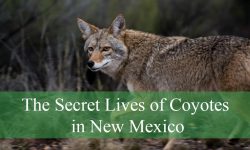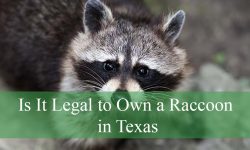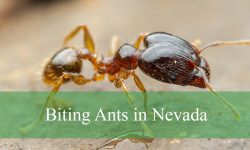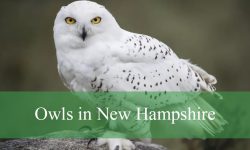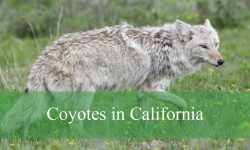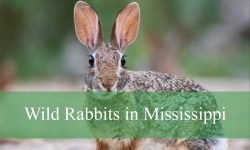Nebraska is home to a variety of quail species, each uniquely adapted to the state’s grasslands, brushy fields, and river valleys. These birds are fascinating to observe, whether for wildlife enthusiasts or hunters.
Among the quail found in Nebraska, the Northern Bobwhite is the most common and widespread, while species like the California Quail and Gambel’s Quail are rare or occasional visitors. Understanding their characteristics and habitats makes identification easier.
This guide explores five quail species in Nebraska, providing detailed descriptions, identification tips, behavior, and fun facts to help you recognize them in the wild or on your next outdoor adventure.
Different Types of Quail Found in Nebraska
Northern Bobwhite (Colinus virginianus)

Identification & Size
The Northern Bobwhite is a small, plump bird ranging from 9 to 10 inches (23–25 cm) in length and weighing about 5 to 6 ounces. Males have a striking black-and-white face with a white throat patch, while females exhibit a softer, yellow-brown face. Both sexes have mottled brown and white plumage that provides excellent camouflage in grasslands and brushy areas. The tail is short, and the wings are rounded, aiding in quick, explosive flight when escaping predators. Observers can easily recognize the male by its loud, distinctive “bob-white” whistle that carries over long distances.
Habitat & Distribution in Nebraska
Northern Bobwhites are native and primarily found in southeastern and south-central Nebraska. They prefer brushy grasslands, overgrown fencerows, and shelterbelts where dense ground cover provides protection from predators. Their populations extend through the Platte and Republican River valleys but are rare in the northern Niobrara River Valley and sporadic in the Panhandle. These birds favor transitional habitats with a mix of open grassy areas for foraging and dense brush for nesting and cover, making habitat management critical for their survival.
Behavior & Social Structure
Northern Bobwhites are highly social, particularly during the fall and winter months when they form coveys of about a dozen birds. At night, they roost on the ground in tight circles with tails pointed inward and heads facing outward, maximizing protection against predators. During the breeding season, males perform elaborate calls and display behaviors to attract mates. They are known for their cryptic nature, often freezing or running when threatened, relying on their camouflaged plumage to remain undetected.
Diet & Foraging
These birds are omnivorous, feeding on a mix of seeds, berries, insects, and small invertebrates. They forage mostly on the ground, scratching leaf litter and soil to uncover food. In spring and summer, insects like grasshoppers, beetles, and caterpillars become a key food source, especially for feeding chicks. Their diet shifts seasonally depending on availability, and their foraging patterns often take them along edges between open fields and brushy areas, where they can quickly retreat to cover. Fun fact: Northern Bobwhites are often considered a keystone species in their ecosystems, as their presence benefits both predators and plant communities.
California Quail (Callipepla californica)
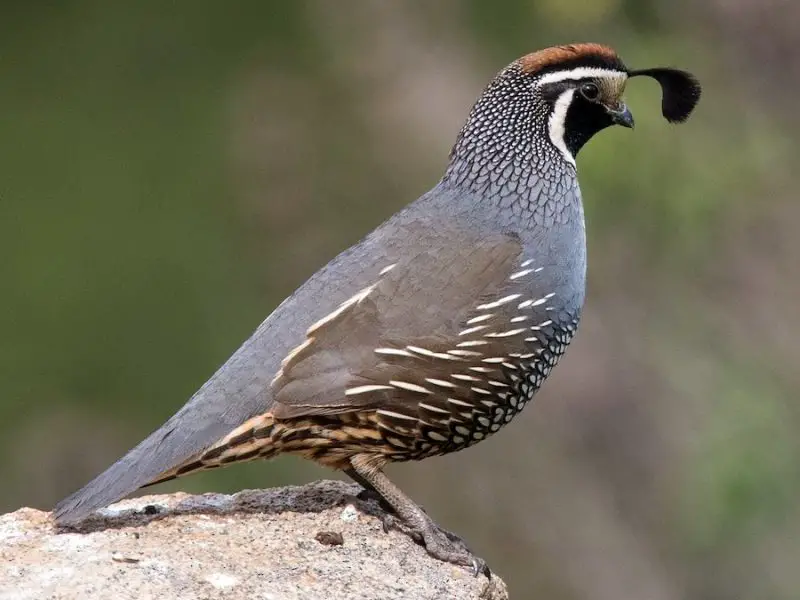
Identification & Size
California Quail are medium-sized birds, approximately 10 inches (25 cm) in length, with a distinctive topknot of black feathers curving forward from the forehead. Males have a striking black face with a white throat and chestnut-colored flanks, while females are duller, with brownish-gray tones and a less pronounced topknot. The scaly pattern on the belly is a characteristic feature. Their vocalizations include the familiar “chi-ca-go” call, which is a hallmark of this species in its native range.
Historical Presence in Nebraska
California Quail were historically recorded in Nebraska, with the last confirmed specimen collected in Madison County in 1940. Since then, there have been no verified sightings, and the species is considered extirpated in the state. While some reports exist of occasional escapees from captivity, these birds have not established wild populations in Nebraska. Their historical presence suggests they once utilized brushy or edge habitats similar to those preferred by Northern Bobwhites.
Behavior & Social Structure
California Quail are highly social, forming large coveys during fall and winter that may number several hundred individuals. These coveys provide protection against predators and improve foraging efficiency. In spring, coveys break up as males establish breeding territories and pair bonds form. The birds exhibit ground-based behaviors, running swiftly to cover when threatened. They display strong site fidelity, often remaining in the same general area for years, relying on both cover and food resources within their home range.
Diet & Foraging
California Quail primarily consume seeds, fruits, and insects, scratching the ground to locate food. They are opportunistic feeders and may consume a wide variety of plant material depending on seasonal availability. Insects become especially important during the breeding season for feeding chicks. Their foraging is mostly done on the ground in groups, which provides safety from predators and allows the birds to communicate and maintain social bonds. Fun fact: Their iconic topknot serves not only as a visual identifier but may play a role in social signaling within coveys.
Gambel’s Quail (Callipepla gambelii)
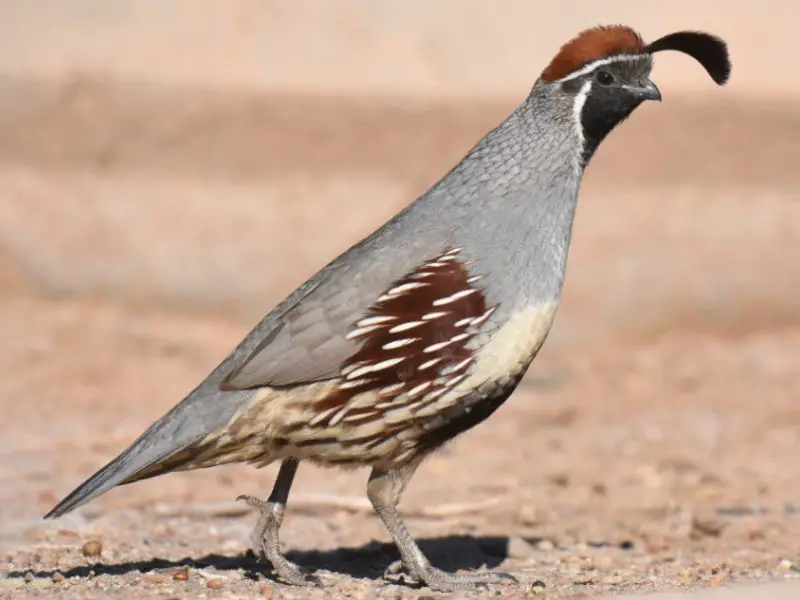
Identification & Size
Gambel’s Quail are medium-sized, measuring around 10 inches (25 cm) in length and weighing roughly 5–6 ounces. Both sexes have a topknot of black feathers on the head, but males are more colorful, displaying a rich chestnut belly and grayish-blue body, whereas females are duller in coloration with more muted gray-brown tones. Their distinctive scaly belly pattern and compact, rounded body make them easily distinguishable from other quail species. Their calls are sharp and repetitive, often serving as alarm signals to alert the covey.
Habitat & Distribution
Native to the arid deserts and scrublands of the southwestern United States, Gambel’s Quail prefer rocky terrain with sparse vegetation and proximity to water sources. In Nebraska, they are not native, but occasional escapees or captive releases may appear. In their native habitats, they are commonly seen near desert washes or along the edges of desert streams, using the environment for both food and cover. These quails rely on low shrubs and brush to hide from predators while still being able to forage in open areas.
Behavior & Social Structure
Gambel’s Quail are gregarious, forming coveys of 10–15 birds outside the breeding season, which sometimes merge into larger groups for winter safety. During the breeding season, males establish territories and perform display behaviors, including puffing their chest and calling to attract mates. They exhibit strong social cohesion, with individuals maintaining visual and vocal contact while foraging. Their movements are primarily ground-based, and they prefer running to flying when threatened, using speed and camouflage to evade predators.
Diet & Foraging
These quails are mostly herbivorous, feeding on seeds, leaves, berries, and occasionally insects. They scratch the ground to uncover hidden seeds and tend to forage in areas with sparse vegetation where food is accessible. Their diet provides much of the water they need, reducing dependence on open water sources. Gambel’s Quail have a seasonal variation in diet, consuming more insects during breeding season for chick nutrition. Fun fact: In the wild, Gambel’s Quail are known to walk several miles daily in search of food and water, demonstrating remarkable endurance for such small birds.
Scaled Quail (Callipepla squamata)
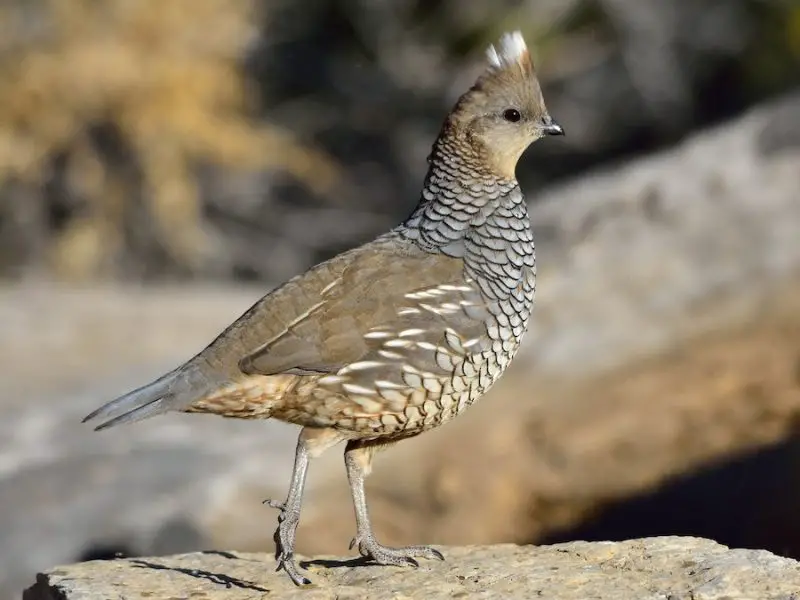
Identification & Size
Scaled Quail are medium-sized birds, about 10 inches (25 cm) in length, and weigh roughly 5–6 ounces. Their most distinctive feature is the scaly pattern on their breast and belly, formed by light-colored feathers edged with dark lines. Males have a bluish-gray body with a black face and a pronounced topknot, while females are more muted, with brown-gray tones and a less conspicuous crest. Their short, rounded wings allow for rapid bursts of flight, although they primarily rely on running to escape threats.
Habitat & Distribution
Native to arid grasslands and deserts of the southwestern United States, Scaled Quail are not native to Nebraska and are rarely observed in the wild there. In their natural habitat, they favor open terrain with scattered shrubs or low brush that provides cover from predators. Any appearances in Nebraska are usually the result of escapees from captivity or rare vagrants blown off course. In the Southwest, they are often found near dry washes and foothills where seeds and insects are abundant.
Behavior & Social Structure
Scaled Quail are social birds that form coveys of up to 20 individuals outside the breeding season. These coveys forage and roost together, offering protection through safety in numbers. During breeding season, males establish territories and perform vocal displays to attract females. Like other quails, they are primarily ground-dwellers, preferring to run to cover rather than take flight. Their social cohesion is reinforced by constant vocal communication and coordinated movements while foraging.
Diet & Foraging
These quails are mostly granivorous, feeding on seeds, leaves, and small berries, with insects consumed primarily during the breeding season. Foraging is conducted on the ground by scratching through soil and leaf litter to uncover food. Their diet provides sufficient hydration, allowing them to thrive in arid regions with limited water sources. Fun fact: Scaled Quail are capable of running several miles in search of food and water, showcasing remarkable endurance for their size.
Common Quail (Coturnix coturnix)
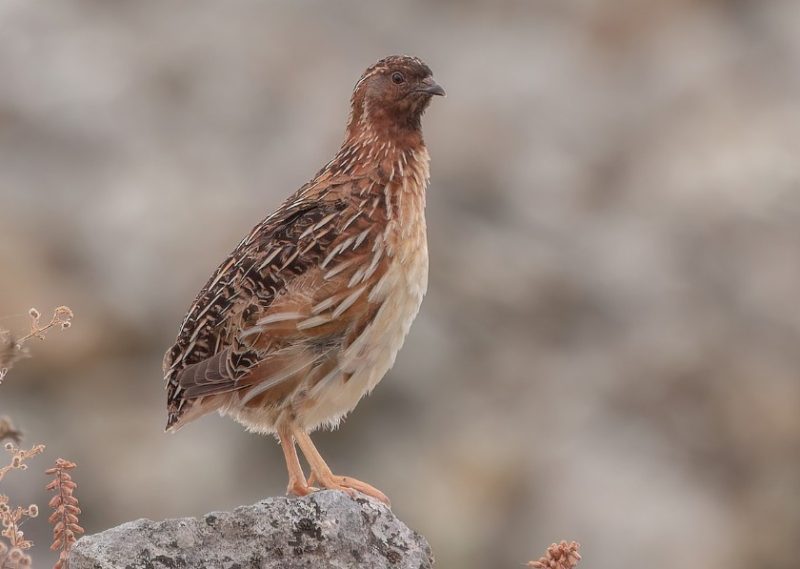
Identification & Size
The Common Quail is a small, compact bird measuring around 9 inches (23 cm) in length and weighing roughly 3–4 ounces. They exhibit a warm brown body with intricate streaking on the back and lighter underparts, often appearing scaly from a distance. Males have subtle white markings on the throat and face, while females are slightly duller and less patterned. Their short, rounded wings are built for quick, low flights, making them elusive and difficult to observe in the wild.
Habitat & Distribution
Native to Eurasia and North Africa, the Common Quail is not native to Nebraska and is considered accidental if ever observed there. Its preferred habitat consists of open fields, grasslands, and agricultural landscapes with low vegetation for cover. Occasional records in Nebraska may result from vagrants or escapees from captive populations. In its native range, it breeds in temperate climates with ample ground cover and abundant seeds and insects.
Behavior & Social Structure
Common Quail are secretive and highly ground-oriented, often relying on camouflage and stealth to evade predators. They form coveys outside the breeding season, typically consisting of 10–20 birds, which enhances safety during foraging. During breeding season, males call persistently to attract females and establish territories. They are migratory in much of their native range, traveling at night to reach wintering grounds, although any Nebraska sightings would likely involve individual vagrants rather than established populations.
Diet & Foraging
The diet of Common Quail primarily consists of seeds, grains, and small invertebrates. They forage by walking through grass and soil, picking food items from the ground rather than flying to reach them. Insects and other protein sources are especially important for feeding chicks during the breeding season. Fun fact: Despite their small size, Common Quail are capable of surprisingly long migratory flights, covering hundreds of miles between breeding and wintering areas, which may occasionally explain rare sightings outside their usual range.
FAQs About Quail in Nebraska
What species of quail are found in Nebraska?
Nebraska is home primarily to the Northern Bobwhite (Colinus virginianus), which is native and widespread in southeastern and south-central parts of the state. Other species, such as California Quail (Callipepla californica), Gambel’s Quail (Callipepla gambelii), Scaled Quail (Callipepla squamata), and Common Quail (Coturnix coturnix), are either rare, non-native, or accidental visitors.
Where can I find Northern Bobwhite in Nebraska?
Northern Bobwhite are most commonly found in southeastern Nebraska, including the Platte and Republican River Valleys. They prefer habitats with dense brush, grasslands, overgrown fencerows, and shelterbelts. Public Wildlife Management Areas also provide good opportunities to observe and hunt these birds.
Are California Quail still present in Nebraska?
No, California Quail are considered extirpated in Nebraska. The last confirmed specimen was collected in Madison County in 1940. Any sightings today would likely be escapees from captivity or misidentified individuals.
Can Gambel’s Quail be found in the wild in Nebraska?
Gambel’s Quail are not native to Nebraska. Occasionally, they may appear as escapees from captivity, but they do not have established wild populations in the state. Their natural habitat is the arid deserts of the southwestern United States.
What is the difference between Scaled Quail and Gambel’s Quail?
Scaled Quail have a distinctive scaly pattern on their belly and lighter grayish-blue plumage, whereas Gambel’s Quail have a chestnut-colored belly and gray body with a more pronounced topknot in males. Both species are ground-dwelling and form coveys, but Scaled Quail prefer desert grasslands while Gambel’s Quail inhabit rocky arid regions.
What do quail in Nebraska eat?
Northern Bobwhite primarily eat seeds, berries, and insects, with insects becoming more important during breeding season. Other quail species, when present, have similar diets of seeds, fruits, and insects. They forage mostly on the ground by scratching leaf litter and soil.
Are quail migratory in Nebraska?
Northern Bobwhite and other quail species in Nebraska are generally non-migratory. They remain within their home ranges year-round, forming coveys in fall and winter. Migratory behavior is more typical for the Eurasian Common Quail, which is only an accidental visitor in Nebraska.
Is quail hunting allowed in Nebraska?
Yes, hunting Northern Bobwhite is allowed in Nebraska during designated seasons, usually from late October through January. Hunters can access public lands, wildlife management areas, and private lands with permission. Programs like Open Fields and Waters provide additional hunting opportunities.
How can I attract quail to my property in Nebraska?
Providing dense brush, shelterbelts, and a mix of grasslands can help attract Northern Bobwhite. Planting native grasses and leaving areas with leaf litter encourages foraging. Supplemental food and water may help, but maintaining natural cover is the most effective method.

